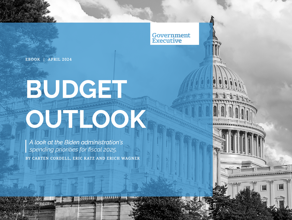Taxpayer advocate highlights challenges for legit taxpayers tagged as fraudsters by the IRS
The only online remediation option for people whose tax returns have been flagged as potential identity theft is through vendor ID.me.
National Taxpayer Advocate Erin Collins, the head of an independent organization at the IRS meant to focus on taxpayer issues and rights, said in a recent blog post that as the agency looks to address increasing identity fraud, it also needs to do more to help any legitimate taxpayers whose returns are flagged as potentially being submitted by identity thieves.
The IRS screens tax returns to check if the income and wages are correct as well as “if the legitimate taxpayer truly filed the tax return,” the blog says.
When a return is flagged, processing is suspended and a letter is sent asking the filer to verify their identity so the tax return can be processed.
“On one hand, having the IRS protect against [identity theft] is good for all, but for those taxpayers dealing with [identity theft] or needing the IRS to release their refunds when flagged as potential identity theft, the delay causes issues, and the process is confusing and time consuming,” Collins wrote in the Aug. 24 blog. “The IRS should assist taxpayers throughout the process to reduce the burden for those properly filed tax returns.”
Last year, the IRS suspended 4.8 million returns because of possible identity theft, according to the blog post. Around 2 million of those verified their identities and 255,000 were confirmed as identity theft, leaving over 2.5 million still suspended. Some of those are likely returns submitted by identity thieves who gave up, Collins writes, but others might be legit taxpayers who moved, didn’t understand the letter from the IRS or couldn’t authenticate themselves.
And the number of fraudulent claims is going up as the number and value of tax credits also increases, wrote Collins. A May report from the Treasury Inspector General for Tax Administration found that as of March 2, the IRS had already identified 1.1 million returns as potentially fraudulent and confirmed that 12,617 were indeed the result of identity theft. That number of confirmed cases of identity fraud returns is up from 9,626 at the same time last year.
The IRS also increased the number of filters it uses to flag potential identity theft, going from 168 in 2022 to 236 in 2023, according to the TIGTA report.
Taxpayers whose returns are flagged as potentially fraudulent get one of several letters asking them to verify their identity and return information.
Collins writes that both the letters and online processes are “complex and confusing,” especially for people for whom English is a second language. And other online IRS tools only provide limited information, she said. The Where’s My Refund Tool, for example, doesn’t offer details when tax return processing is stopped because of potential identity theft.
Sometimes letter recipients are directed to verify their identity online, with the option of doing so over the phone with the IRS, although Collins notes in her blog that, as of Aug. 5, the phone line for the Taxpayer Protection Program has only a 31% level of service for fiscal 2023. If someone can’t be verified over the phone, they might be asked to go to an IRS office in person, according to the blog.
The online Identity and Tax Return Verification Service that some letter recipients are directed to uses vendor ID.me to have users verify their identity. Last year, the tax agency got pushback for its use of ID.me, due to the vendor's use of biometrics and concerns about privacy and security.
Former IRS Commissioner Charles Rettig told lawmakers in 2022 that ID.me’s proofing rates were a big improvement over previous IRS systems, and that the General Services Administration’s government option, Login.gov, would have to meet IRS requirements like transaction levels, identity proofing standards set by the National Institute of Standards and Technology and more to be added to the IRS.
The IRS had plans to add Login.gov to IRS.gov before this year’s Tax Day, although it ultimately postponed the effort. At the time, the IRS and GSA told Nextgov/FCW that the agencies were aiming to add Login.gov to more taxpayer services.
For its part, the IRS is updating the refund tracker tool, according to the blog, and has also made changes to the letters meant to make them more understandable. The Taxpayer Advocate Service is also working with the IRS on a focus group of taxpayers who’ve received the letters, and the IRS is piloting different versions of the same letter to see which gets more responses.
For recipients of one of several of the letters issued for potential identity theft, the tax agency is also offering in-person ID.me services “for a limited time” for people who struggle to complete the identity check online as part of a pilot, according to its website.
Per a May ID.me press release, five government agencies use the in-person offering, which ID.me does with identity and background services provider Sterling.
ID.me CEO Blake Hall told Nextgov/FCW in a statement that “users that don’t have access to technology or prefer to engage outside of purely digital channels can do so in a way that meets the government’s high bar for security and assurance.”
At the IRS, these aren’t the only processes that have come under scrutiny as of late related to legitimate taxpayers tagged as potentially fraudulent.
Another recent inspector general report zeroed in on IRS efforts to ensure that fraudsters don’t get payments by using the information of dead people to file returns and get benefits, finding that errors where legitimate, living taxpayers are flagged can be burdensome for taxpayers to fix.
An IRS spokesperson told Nextgov/FCW that they had “no immediate response” to a request for comment to this story.






